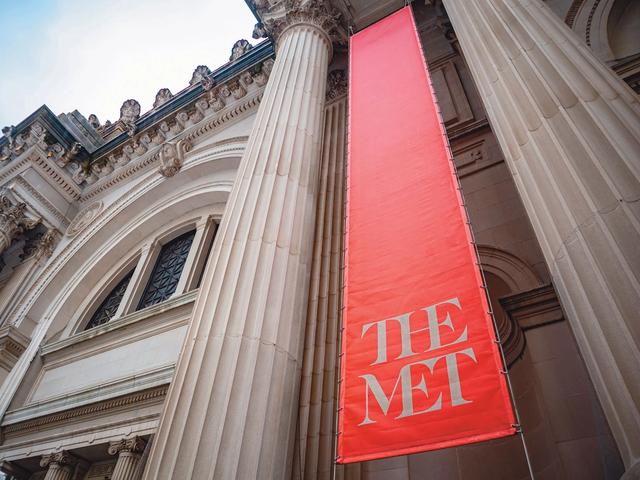Since the onset of the Covid-19 pandemic, Americans are increasingly engaging with art via digital media, according to key findings of two newly-published national surveys supported by the National Endowment for the Arts (NEA) that each respectively analysed in-person and virtual participation in the arts over a 12-month period ending in 2022.
The Survey of Public Participation in the Arts (SPPA) is a study conducted since 1982 that is administered by the US Census Bureau every five years to evaluate the art habits of the nation, including how often people attended arts events, created or performed art, read books or literature, watched or listened to arts content via media or learned an art form.
A comprehensive statistical report of the 2022 SPPA data will be released next year, although a summarised report released today (18 October)—which aims to examine its results in light of the effects of the 2020 pandemic outbreak—reveals that the impact of the Covid-19 era made Americans increasingly inclined to consume art through their screens rather than in-person, even after government restrictions were lifted.
This iteration of the SPPA, titled “Arts Participation Patterns in 2022: Highlights from the Survey of Public Participation in the Arts”, “suggests that the slow recovery of the sector was mirrored by sluggish rates of arts attendance compared to five or even ten years earlier”, according to researchers.
Notably, the SPPA reveals that fewer Americans visited museums or galleries during the survey period, with in-person attendance suffering a 6% decline—a drop from 24% to 18%. In-person attendance to all forms of arts events saw an overall 11% drop; this also included categories for music and dance performances, arts and crafts festivals, sites with “historic or design” importance, such as monuments and parks, and other cultural attractions. (These findings resonate with findings of The Art Newspaper’s most recent museum attendance survey, which showed that the world’s leading museums still are receiving far fewer visitors than they did before the pandemic.)
Just one category reserved for “other” forms of art attendance, which asked participants whether they had visited arts events in an unlisted format, saw growth. Perhaps signaling the rise of digital engagement, this “other” category increased dramatically, by 21%.
The SPPA report also revealed that Americans have not been more inclined to personally create art since the pandemic, although it acknowledges that, due to the timeline of the sample collection period, further research is needed, and that the “results do not permit us to know exactly how arts participation habits evolved during the pandemic”.
For most art forms, the number of respondents who report creating or performing art during the survey period was similar to the previous study conducted in 2017. Lockdown restrictions sparked a modest 2% hike in the “creation and performance” of art, with 52% of participants engaging in some form of artmaking. There was slight growth in some solitary activities like leatherwork, woodwork and metalwork, as well as textile crafts like needlepoint and knitting.
Other conventionally solo activities like creative writing and photography took a slight dip, and there was also a 4% decline in reading, according to the survey results. Excluding mandatory reading for work or school, just 52% of participants reported reading or listening to at least one book or audiobook during the survey period either in print or electronically. These are the lowest results for reading ever on record since the SPPA was launched 41 years ago.
Most participants who report learning an arts subject were either self-taught or learned through friends or family rather than through formal in-person or virtual lessons.
The SPPA findings are further examined in the General Social Survey (GSS) report titled “Online Audiences for Arts Programming: A Survey of Virtual Participation Amid Covid-19”. The biannual survey was first implemented in 1972 to inform policymakers of Americans’ evolving characteristics and attitudes, and this iteration was published in collaboration with the National Opinion Research Center at the University of Chicago and the National Science Foundation.
Compared to the 75% of Americans who reported engaging with digital arts activities in the SPPA, more than 80% of respondents to the latter survey (which used different question-items and methods) reported having attended some form of digital arts event between 2021 and 2022, including viewing or listening to archived or livestreamed events, listening to arts-related podcasts, taking online classes or “attending” online exhibitions and tours.
The GSS results suggests that, even as the world started to return to in-person activities, digital engagement remained high, with 30% of respondents reporting engaging in one or more digital arts activities more often than in the first year of the pandemic.
The greatest share of participants to the GSS—69% of those surveyed—report engaging with an archived online event, rather than a livestreamed one, perhaps signaling a preference for the scheduling flexibility that such materials allow. There was a higher rate of participation among women, respondents aged between 18 and 24-years-old, and Black, Hispanic, non-White and non-Hispanic adults.
Combined with the SPPA findings, the GSS “allows a glimpse into virtual arts participation in the US, and how behaviours changed over the course of the first two years of the Covid-19 pandemic,” according to researchers. “As more and more people were confined to their homes, or chose to stay there, an array of digital arts opportunities—ranging from online museum tours, livestreamed and archived events, and podcasts or online classes—helped to keep adults engaged with arts and culture.”



